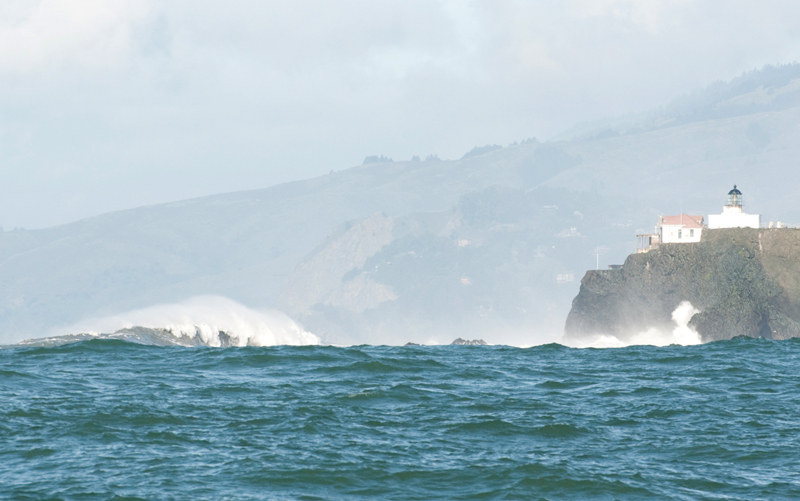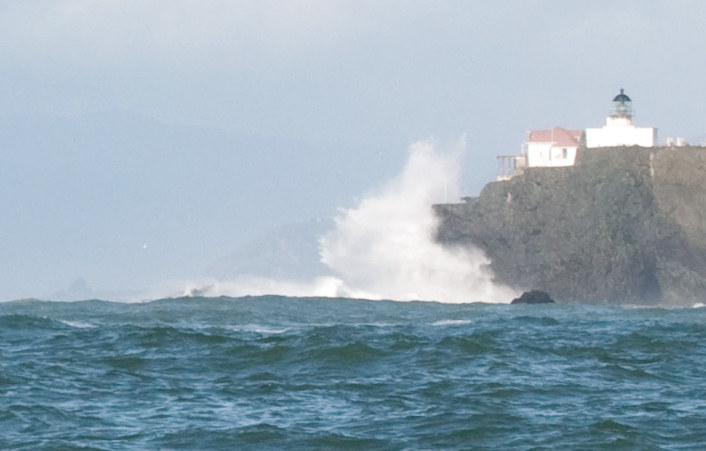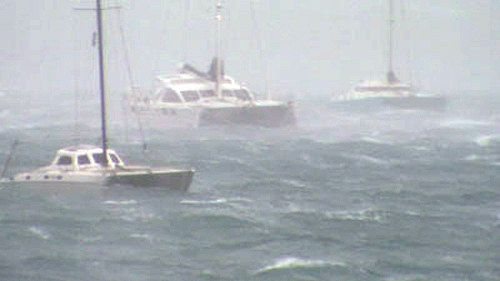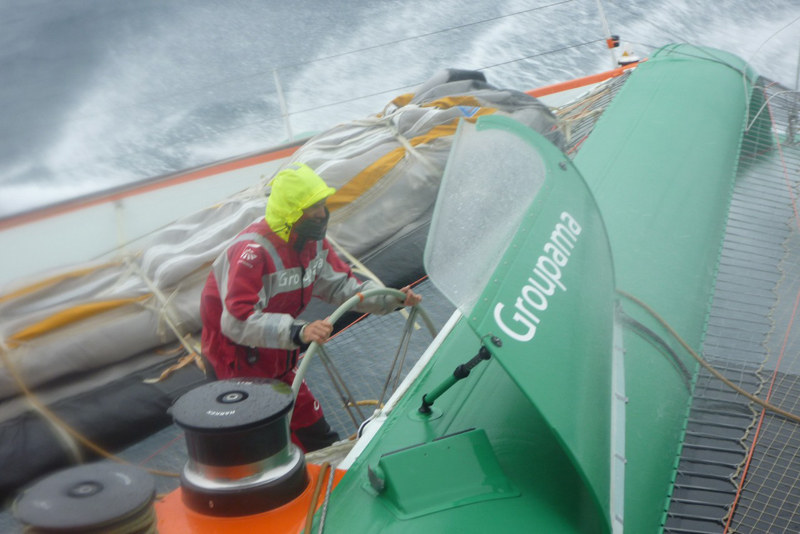
Surfin’ Bonita Channel

Experienced solo sailor Rob Macfarlane — he’s sailed in three Singlehanded TransPacs and innumerable Bay Area races — got a little taste of what made this year’s Mavericks surfing competition one of the best — and most destructive — ever.
"I was exiting the Gate onboard my Nelson/Marek 45 IOR Tiger Beetle, headed out through the main shipping channel to spend the long weekend at Drake’s Bay. On departure, the buoy reports were showing 16- to 18-ft swells in the area, and there was a mild ebb running early — perhaps due to the rainwater run-off from the Sierras — and the result was enormous breakers clear across the Bonita Channel.
"I was singlehanding up to Drake’s, and had run up the main and was motoring out through the main shipping channel. It was amazing to see the swells breaking clear out at G1 (the western end of the channel) clear through and across Bonita Channel to crash into the cliffs at the foot of the Pt. Bonita lighthouse. No way was there a safe passage in that area! The south bar was also breaking violently.

"The Pt. Bonita light is 124 feet above sea level on a 56-ft tower, so that places the base of the lighthouse at 68 feet above sea level. That means the spray from those waves was flying 70 feet into the air! I haven’t seen it breaking so big out there in 20 years of sailing the Gulf of the Farallones."
Things have settled down considerably since Saturday, with the Bar buoy reading 7 feet at 13 seconds this morning, but Macfarlane’s experience just drives home the point to always watch yourself outside the Gate, especially in the winter. If you’re the slightest bit concerned about how things are looking, turn around and wait for better weather.
New Storm Threatens in Wake of Rene
"We took a direct hit," reports Joel Stern, who rode out category 2 Cyclone Rene in Tonga earlier this week aboard his San Diego-based Vagabond 47 Paradise Bound. "Rumor has it we had 90 knots steady with gusts to 143 knots. It was a huge storm; at least 600 miles wide. It traveled at about 12 knots and we were in the eye for almost 2 hours."
With his Portuguese water dog, Tender, by his side, Stern spent eight hours on deck motoring into the wind-driven waves.
"When the storm first arrived, the winds were out of the east. After the eye they were out of the north. That was when I had problems." There was plenty of fetch from that direction, causing Paradise Bound and other boats to drag. After sliding 440 yards, the mooring she was on eventually grabbed again, however, and the boat was unharmed.

©2010 Latitude 38 Media, LLC
The boat Lighten Up broke loose and hit another vessel, Stern reports. It then dragged to the opposite shore and went aground, but was later pulled off with only minor damage. "Another boat dragged out to the point and then grabbed," he says. "But when the wind reversed, it dragged back again like nothing had happened!" Despite the good luck of these and other sailors, there was, of course, extensive damage ashore.
Today, as cruisers and islanders lick their wounds and make repairs, another ominous threat looms in the distance. Tropical Storm Sarah is now near latitude 10°N and longitude 160°W. "The isobars are really packed close together," notes Stern. "There were 17 isobars showing on the weather maps the other day, while Rene only had around 9 isobars." Stay turned for further updates.
In the meantime, check out Steven Gates’ video of Rene, shot from aboard his Brown Searunner 37 tri Manu-O-Ku. (Courtesy Manuoku Productions / www.manuoku.com)
PV Race Starts Friday
The 13 boats in this year’s San Diego to Puerto Vallarta Race will get underway Friday and Saturday. The 1100-mile downhill slide will feature two Northern California boats, Tom Akin’s TP 52 Flash, and Bill Turpin and David Janes’ R/P 77 Akela, and you can follow their progress by clicking the "tracking" button at the link above. Once the boats get to PV, many will be sticking around for what’s shaping up to be a great MEXORC — this year part of a much larger Nextel Bicentennial Mexico Cup honoring the country’s 200-year anniversary. Thirty-eight boats are signed up, and we’re hearing that the organizers are putting more energy into it than ever before.
Groupama Gets Bogged Down
After a blistering, sub-six-day trip from Ushant to the Equator, Franck Cammas’ 105-ft trimaran Groupama 3 has had a rough time of it in both the South Atlantic and the transition to the Indian Ocean. The boat’s one-time lead of 620 miles over the reference time set by Bruno Peyron’s Orange 2 in ’05 has since turned into a deficit of 338 miles due to both a massive St. Helena High and an uncooperative front.

© Latitude 38 Media, LLC
"Today we have a moderate southerly wind, due to being at the back of the front; a front we’re not managing to traverse," Cammas said. "We’ve had to jibe and, as we’ve become separated from the front, a 14- to 15-knot breeze has been pushing us along due east. If everything goes to plan, the front is likely to come to a standstill this evening, at which point we should finally hook onto a northwesterly wind. As such we’ll be able to make good speed again on course to Cape Leeuwin."
With the deficit decreasing slightly in the last 24 hours, Groupama 3 seems to be hanging in there. Orange 2 didn’t have a particularly fast transit of the Indian Ocean in ’05, but Peyron’s big cat did have an nearly unbeatable transit through the Pacific Ocean. That makes the Indian Ocean crossing critical for Cammas’ team — any miles they can make up here will go a long way toward getting them around the world in less than 50d, 16h, 20m.
